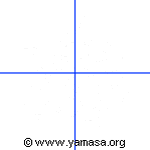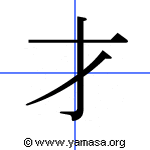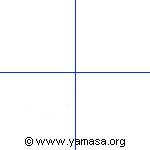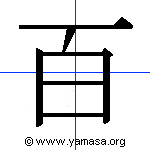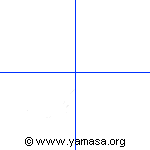
MoHS Japanese 2 Resources
Ebisuya-sensei, Fukada-sensei, Wong-sensei 2014-2015
These are the Kanji presented in MoHS Level 1 and 2. Learning Kanji is like learning to create images of vocabulary words. Like learning to spell in English, Kanji is a visualization of the item, concept or word. Learning the correct stroke order, size, shape, proportions and angles allows or efficient communication of ideas. Just as we have various spelling rules in English, we have stroke order rules for Kanji. Please be sure to write the characters in the correct stroke order to allow for ease of writing (there's a reason for it to be in that order) and with the correct proportions (so it is not mistaken for something else). There are various resources linked to this page to allow for more detailed exploration of each character. Let's have some fun writing Kanji!
Kanji: Set #2
三百 : three hundred
四百 : four hundred
六百 : six hundred
八百 : eight hundred
百本 : one hundred long/cylindrical objects
さんびゃく
よんひゃく
ろっぴゃく
はっぴゃく
ひゃっぽん
ヒャク
ビャク
ピャク
三千 : three thousand
八千 : eight thousand
千百 : one thousand one hundred
さんぜん
はっせん
せんひゃく
よっ(つ)
よん
よ
セン
ゼン
一万 : ten thousand (10,000)
十万 : one hundred thousand (100, 000)
百万 : one million (1,000,000)
千万 : ten million (10,000,000)
いちまん
じゅうまん
ひゃくまん
マン
バン
四円 : four yen
七円 : seven yen
九円 : nine yen
百円 : one hundred yen
よえん
ななえん
きゅうえん
ひゃくえん
まる(い)
まる
エン
一才 or 一歳: 1 year old
二才 or 二歳: 2 years old
三才 or 三歳: 3 years old
四才 or 四歳: 4 years old
七才 or 七歳: 7 years old
十才 or 十歳: 10 years old
十八才 or 十八歳: 18 years old
何才 or 何歳 : how old/what age
いっさい
に さい
さんさい
よんさい
ななさい
なんさい
じゅうはっさい
じゅっさい
なんさい
じゅうはっさい
じゅっさ��い
ななさい
よんさい
さんさい
に さい
いっさい
サイ
Kanji
Stroke Order
おんよみ
くんよみ
よみかた: combinations/use
hundred
thousand
ten thousand
yen
talent
Sudoku: Played just like a regular sudoku puzzle, but in place of the numerals, use the vocabulary. There should be nine words in each puzzle. Each word appears once per column and once per line. It also appears once in each of the nine sections. Don't cheat by using numbers! Follow the directions carefully for maximum effect.
Learning to use kanji is like learning to spell difficult words. Once we learn the spelling of words, we don't sound out each letter, but see it as a picture or composite of the letters in their particular order. Kanji can be though of the same way. The strokes would be equivalent to the spelling- the order of the letters, which in turn becomes a picture or composite. Just like spelling in English, kanji takes practice, repetition and application. Use the different types of activities below to help you start your practice. After that, it's really up to you to maintain your knowledge, ability to recognize and produce the kanji to apply it in appropriate situations.
Kanji Practice
Worksheet and Chomen: Perfection is practicing the correct way. These worksheets and chomen assignments are designed to build muscle memory, make connections between what you see and produce, and give you a chance to improve your character production skills. You can print out the worksheets you need and use the chomen notes as a guide.
another way of writing "years old"
age suffix, year, time
Vocabulary Flashcards
Quizlet
Choomen Guide
-
Be sure your name and period are on the cover, especially if you use a new book
-
Use pencil only to practice the characters
-
Write the English equivalent at the top of each column
-
Write neatly, fit your characters to the box
-
Always use the correct stroke order to write
-
Add appropriate furigana/reading to each character and okurigana to complete compound words
-
Use all the boxes, don’t skip, to complete the page
-
Self Correct:
-
Compare your writing to the original
-
Erase and fix any errors
-
Check proportion and angles carefully
-
Practice to memorize
-
Say the sounds out to yourself-write the furigana for each character
-
Say the English equivalents out loud
-
Write only a few at a time and take a break
-
Continue to practice over a period of time
-
Contemplate the application of the characters
-
-
Budget your time
-
Don’t wait until the last minute to complete
-
Turn in the assignments on time
-
-
Practice writing more lines
-
Get help if needed
-
Add in the date and assignment number before starting each section
-
Make corrections when feedback is given


